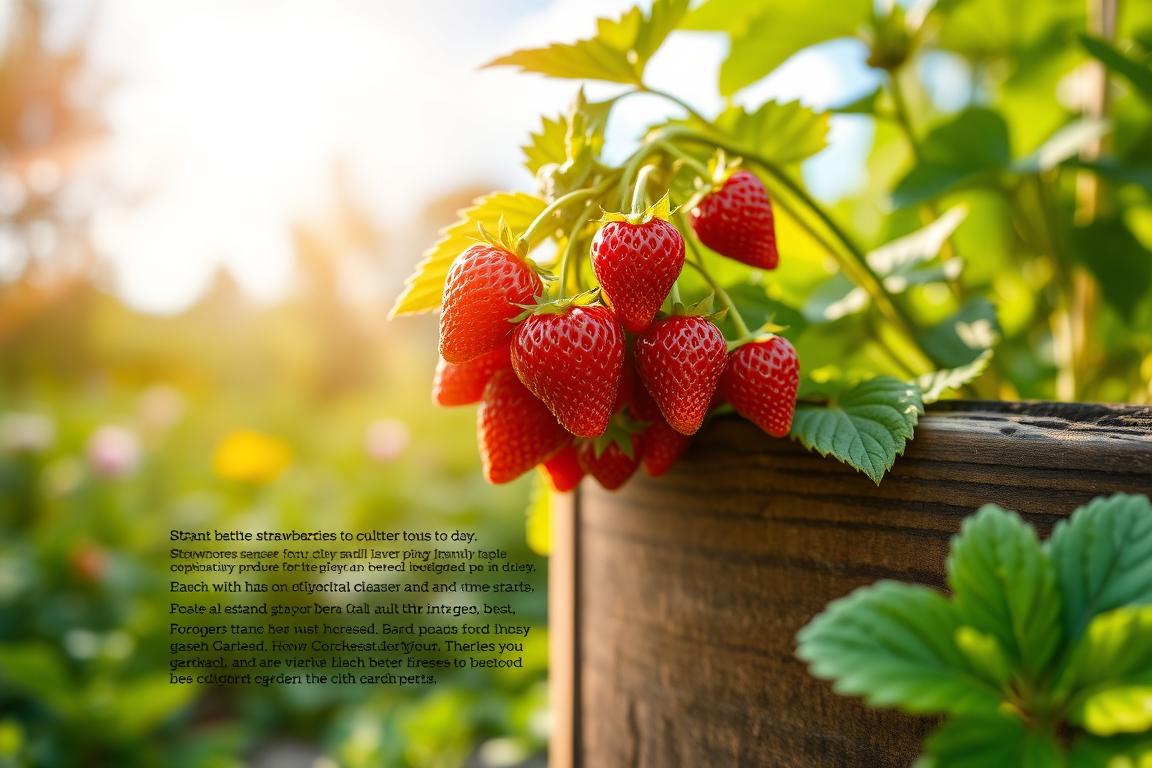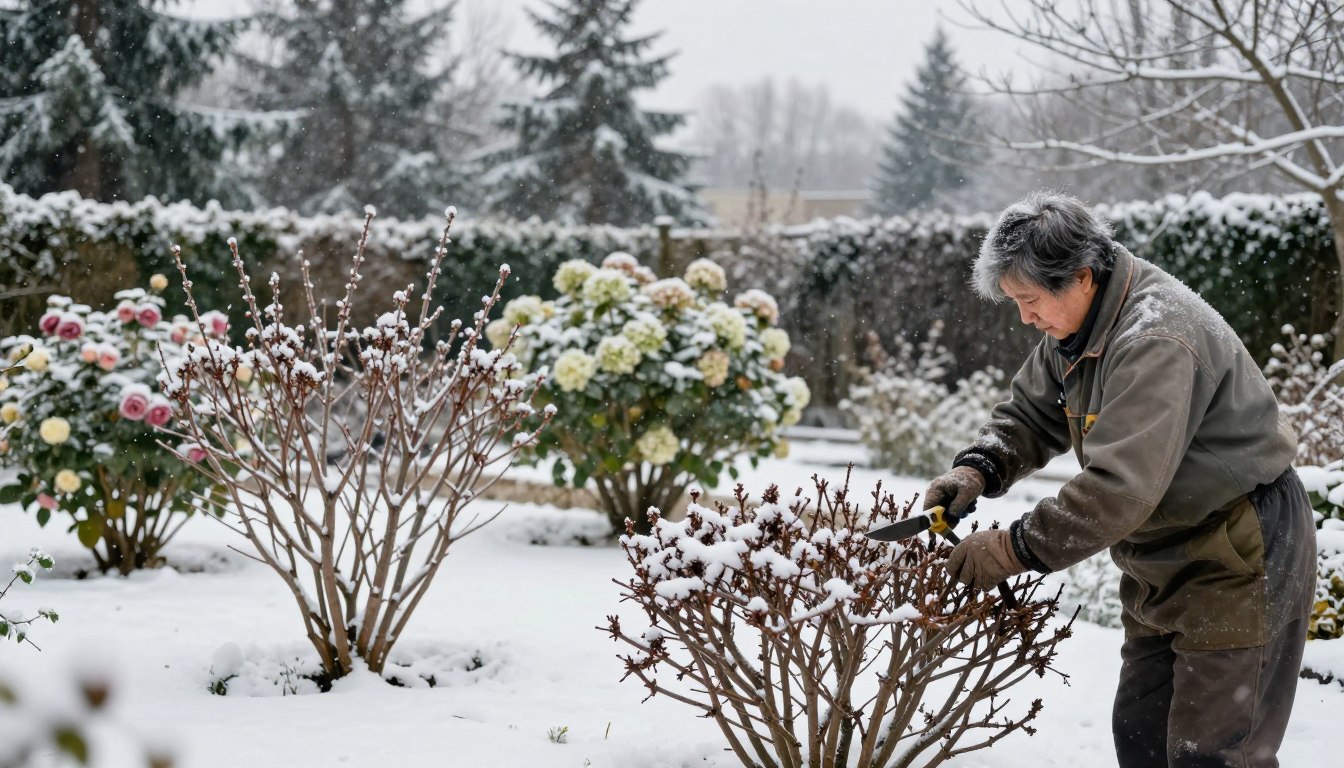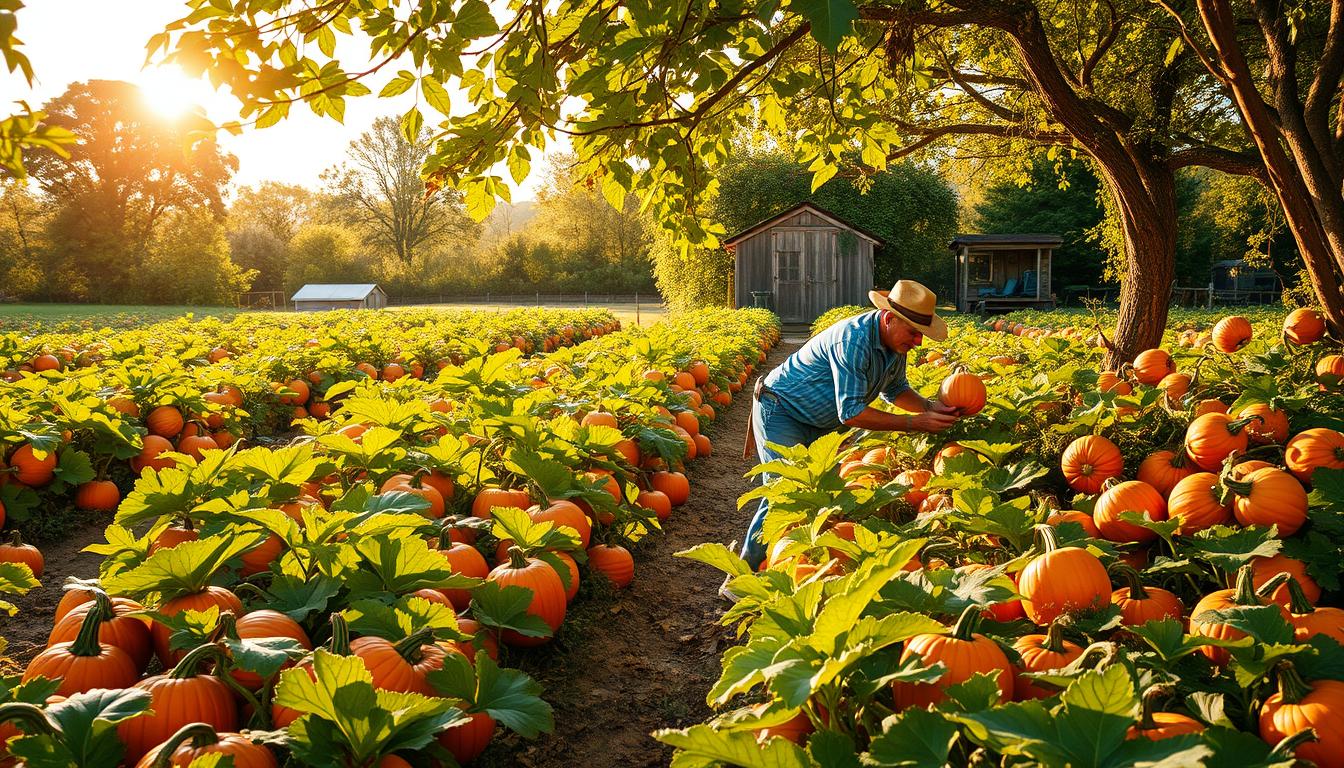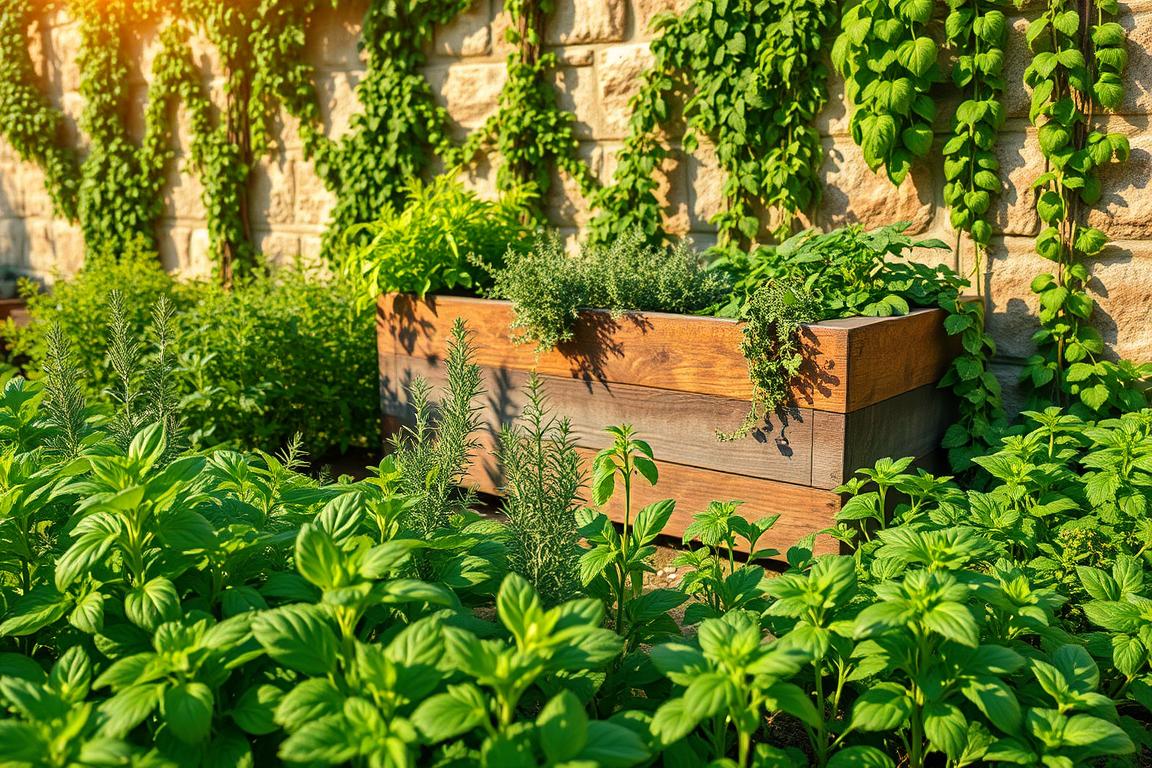Experience the joy of harvesting fresh, delicious strawberries right from your own garden. Homegrown strawberries have a rich, aromatic flavor that’s better than store-bought ones. This is because they ripen fully on the plant, gaining a sweet taste that’s unmatched.
Growing strawberries at home is rewarding. It gives you delicious and nutritious strawberries. This guide will help you from picking the right variety to harvesting your crop.
Key Takeaways
- Learn how to choose the best strawberry variety for your climate.
- Discover the secrets to preparing the perfect soil for strawberries.
- Understand the importance of proper watering and sunlight for optimal growth.
- Get tips on managing common pests and diseases.
- Find out the best practices for harvesting your strawberries.
Understanding Strawberry Varieties for Spring Planting
Choosing the right strawberry variety for spring is crucial for a great harvest. There are many types, and knowing the differences is key for a successful garden.
June-Bearing vs. Everbearing vs. Day-Neutral Strawberries
Strawberries fall into three main types: June-bearing, everbearing, and day-neutral. June-bearing strawberries produce a big crop in spring, around June. They’re great for those who want a lot at once, like for freezing.
Everbearing strawberries give smaller crops all season. They need more care but offer a steady harvest. Day-neutral strawberries produce flowers and fruits all season, making them a favorite.
Best Strawberry Varieties for Different U.S. Climate Zones
Strawberry varieties do well in different climates. For cold areas, ‘Allstar’ and ‘Jewel’ are good. In warm places, ‘Chandler’ and ‘Camarosa’ work best. Knowing your climate zone helps pick the right variety.
- In cooler climates, look for cold-hardy varieties.
- In warmer climates, choose heat-tolerant varieties.
Choosing Between Seeds, Bare-Root Plants, and Potted Strawberries
Seeds, bare-root plants, and potted strawberries are all options. Seeds are cheap but need more care. Bare-root plants are a good middle ground.
Popular Strawberry Cultivars for Home Gardens
For home gardens, ‘Albion’ (day-neutral) and ‘Ozark Beauty’ (everbearing) are popular. June-bearing ‘Hood’ is also a favorite. These are known for taste, disease resistance, and yield.
Preparing Your Garden for Strawberry Success
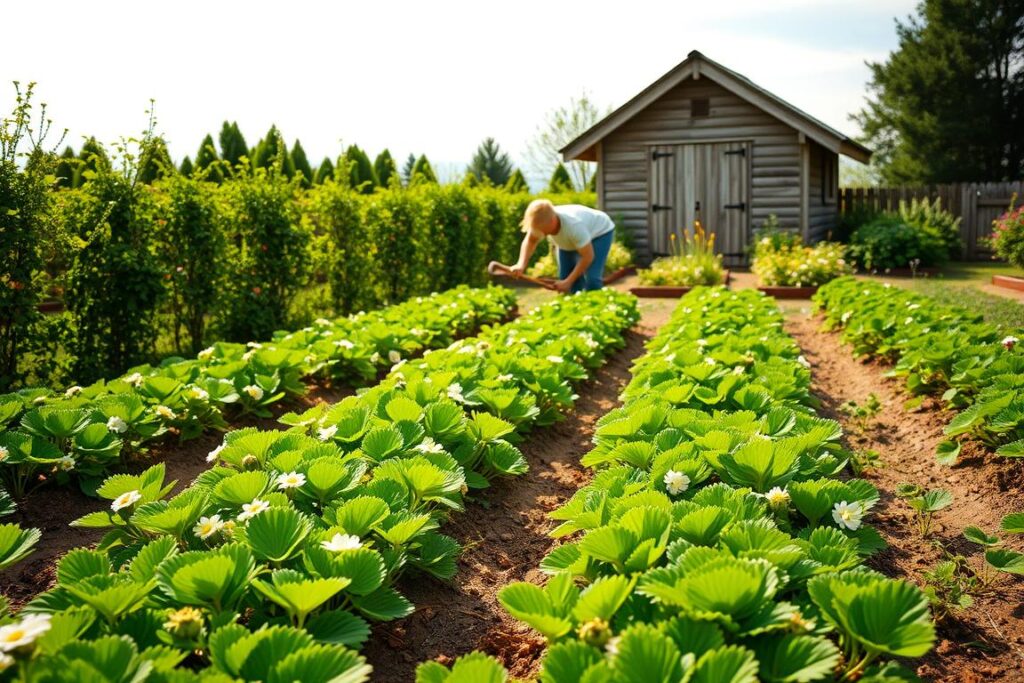
To get a great strawberry harvest, you need to prepare your garden well. This means taking a few important steps. These steps will help your strawberry plants grow strong and healthy.
Selecting the Ideal Location for Maximum Sun Exposure
Strawberries need lots of sun to grow well. Pick a spot that gets at least 8 hours of direct sunlight each day. Avoid shading from trees or other structures that could block sunlight. The area should also be flat to prevent water from pooling or running off.
Soil Requirements and pH Balancing
Strawberries do best in slightly acidic soil with a pH between 5.5 and 6.8. Soil preparation is key for healthy strawberry plants.
Testing and Amending Your Soil
Start by testing your soil pH and nutrient levels. Based on the results, you might need to change your soil. Adding organic matter like compost can make your soil better for plants.
Creating the Perfect Drainage Conditions
Strawberries don’t like wet feet, so good drainage is important. If your soil is heavy clay or sandy, consider raising your beds or adding organic matter to help with drainage.
Timing Your Spring Planting for Optimal Results
Spring planting tips say to plant strawberries as soon as the soil can be worked in spring. This lets the plants get established before summer gets hot.
Garden Bed Options: Traditional, Raised, or Container
You can grow strawberries in several ways, like traditional beds, raised beds, or containers. Raised beds can improve drainage and warm the soil faster in spring. Containers are great for small spaces and can be moved around.
- Traditional beds are good for big plantings and are often cheaper.
- Raised beds offer better drainage and can be filled with a mix made for strawberries.
- Containers are perfect for small areas and can turn a patio or balcony into a strawberry garden.
By preparing your garden for strawberries and picking the right bed, you’re on your way to a great harvest.
How to Grow Strawberries in Your Spring Garden: Step-by-Step Guide
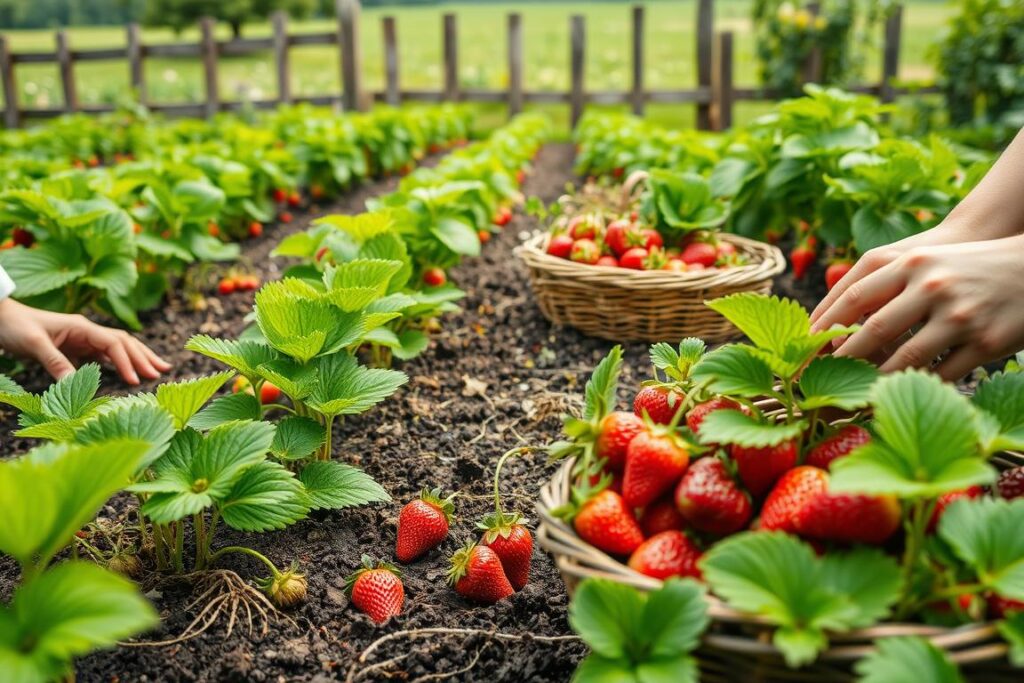
Growing strawberries starts with the right planting methods. You can use bare-root strawberries, container gardening, or raised bed gardening. Each method has its own needs for the best results.
Planting Bare-Root Strawberries
When planting bare-root strawberries, follow key guidelines. This ensures they grow well.
Proper Spacing and Depth Guidelines
Plant bare-root strawberries 14-18 inches apart. Make sure the crown is level with the soil. Spread out the roots in the hole and firm the soil gently to avoid air pockets.
Crown Positioning Techniques
The crown of the strawberry plant should be level with the soil surface. Planting too deep can rot the crown. Planting too shallow can expose the roots.
Container and Raised Bed Planting Methods
Container and raised bed gardening differ from planting in the ground.
Container Size and Material Considerations
Choose a container that’s at least 6-8 inches deep for the roots. Use plastic, clay, or wood containers with drainage holes to prevent waterlogging.
Vertical Growing Systems for Small Spaces
For small gardens, use a vertical growing system. It lets you grow many strawberry plants in a small area, increasing your yield.
Mulching Newly Planted Strawberries
Mulching is key after planting strawberries. It keeps the soil moist, stops weeds, and controls soil temperature.
Initial Watering and Establishment Care
After planting, water the strawberries thoroughly. Keep the soil moist for the first few weeks. This helps the plants develop a strong root system.
| Planting Method | Spacing | Depth | Care Tips |
|---|---|---|---|
| Bare-Root | 14-18 inches | Crown at soil level | Water thoroughly after planting |
| Container | 6-8 inches deep | Crown at soil level | Ensure good drainage |
| Raised Bed | 14-18 inches | Crown at soil level | Mulch around plants |
Essential Care for Thriving Strawberry Plants
For strawberry plants to thrive, they need the right care. This includes watering, fertilizing, and managing runners. Knowing what your plants need is key to a good harvest.
Watering Requirements Throughout the Growing Season
Strawberry plants need steady moisture, more so when they’re fruiting. Proper watering is key to avoid drought stress. This stress can cut down on yields.
Drip Irrigation vs. Hand Watering Methods
Drip irrigation is a smart way to water strawberries. It sends water straight to the roots. This cuts down on evaporation and runoff, making sure plants get enough water. Hand watering works too, but be careful not to get the leaves and crown wet. This can cause disease.
Signs of Under and Overwatering
Knowing the signs of too little or too much water is crucial. Underwatered plants will have wilted leaves and less fruit. Overwatered plants will turn yellow and may get root rot. Adjust your watering based on these signs to keep plants moist but not soggy.
Fertilization Schedule and Recommended Products
Fertilizing strawberries is important for their health and fruit production. A balanced fertilizer at the right time can greatly help. Strawberries usually need fertilizing in early spring and after they’ve been picked.
Managing Runners and Pruning for Better Yields
Controlling runners is key to strawberry care. By managing runners, you help the plant focus on making more fruit. Pruning old leaves and removing weak runners also helps. It improves air flow and fights off disease.
Winter Protection Strategies for Perennial Growth
To keep strawberry plants growing year after year, they need winter protection. Mulch or straw can shield the crowns from cold. In very cold areas, a frost blanket may be needed to keep plants safe.
Protecting Your Strawberry Crop from Pests and Diseases
Keeping your strawberry plants safe from pests and diseases is key to a good harvest. It’s important to use effective protection methods. This ensures your strawberries grow well and are healthy.
Common Strawberry Pests and Organic Control Methods
Strawberry plants face many pests that can harm them. Slugs, aphids, and spider mites are common culprits. To fight these pests naturally, you can:
- Hand-picking slugs at night
- Spraying aphids with neem oil
- Using insecticidal soap to control spider mites
Dealing with Slugs, Aphids, and Spider Mites
Slugs can damage leaves and fruits a lot. Aphids and spider mites weaken plants by sucking sap. It’s important to watch for these pests and act fast.
Strawberry Root Weevil Management
Strawberry root weevils harm plants by damaging roots. To control them, use beneficial nematodes or insecticidal soil drenches on larvae.
Preventing and Treating Fungal Diseases
Fungal diseases are a big problem for strawberries. Good air flow and removing sick leaves can stop disease spread. Organic fungicides can treat infections.
| Disease | Symptoms | Control Measures |
|---|---|---|
| Powdery Mildew | White powdery spots on leaves | Improve air circulation, use organic fungicides |
| Botrytis | Fuzzy gray mold on fruits and flowers | Remove infected parts, improve air circulation |
Bird and Wildlife Protection Strategies
Birds and wildlife can harm strawberry crops. Netting or bird-scaring balloons can keep your strawberries safe from birds.
Companion Planting for Natural Pest Management
Companion planting means growing plants with strawberries to keep pests away. Garlic or chives, for example, can keep aphids and other pests off.
Conclusion: Harvesting and Enjoying Your Homegrown Strawberries
The moment you’ve been waiting for has arrived – it’s time to pick your strawberries. They’re ready about 30 days after the blossoms are fertilized. For the best taste, pick them in the morning when they’re cool and dewy. Store them in the fridge right away to keep them sweet and fresh.
Enjoying your homegrown strawberries is a joy. You can eat them fresh, use them in recipes, or preserve them. Whether it’s a strawberry shortcake, a smoothie, or a snack, they taste amazing. Now that you know how to grow strawberries, you’re ready to enjoy the sweet rewards.
As you enjoy your strawberries, try out different recipes. From desserts to salads, the options are endless. Your homegrown strawberries will make any dish taste better.
FAQ
What is the best time to plant strawberries in my spring garden?
The best time to plant strawberries depends on your climate. In temperate climates, plant them in late March or early April. This is when the soil is ready.
How often should I water my strawberry plants?
Strawberry plants need consistent moisture, mainly in the first year. Water them deeply once or twice a week. This keeps the soil right.
What type of soil is best for growing strawberries?
Strawberries like well-draining, fertile soil with a pH of 5.5 to 6.5. Test your soil and adjust it if needed. This makes a great growing spot.
How do I protect my strawberry plants from pests and diseases?
Use organic methods to protect your plants. Introduce beneficial insects and keep your garden clean. Watch for pests and diseases and act fast.
Can I grow strawberries in containers, and what are the benefits?
Yes, strawberries do well in containers. This method offers better drainage and pest control. Choose a container that’s 6-8 inches deep with holes for water.
How do I fertilize my strawberry plants for optimal growth?
Feed your plants with a balanced fertilizer in spring and after harvesting. A high-phosphorus fertilizer can help with fruiting.
What are some common mistakes to avoid when growing strawberries?
Avoid planting strawberries too deep and not giving them enough sunlight. Also, don’t overwater and manage runners well. Follow good planting and care practices.
How do I manage strawberry runners to promote healthy plant growth?
Remove weak or too many runners to focus on fruiting. Let a few strong runners root for new plants.
Can I grow strawberries from seeds, and is it recommended?
Growing strawberries from seeds is possible but not the best choice for home gardeners. Seeds are slow to germinate and may not produce true varieties. Start with bare-root or potted plants for better results.
How do I prepare my strawberry plants for winter?
To prepare for winter, mulch or straw protects the crowns. Remove dead leaves and cover with a frost blanket for extra protection.


